for Innovation
Grounds
CULINARY
creations
Creating good coffee beverages can only begin with creating good coffee, and good coffee is a result of the skillful combination of art and chemistry. As with all such blending of two seemingly opposing disciplines, nothing happens until the fundamentals have been fully established.
Whether making a cup, a quart, or 1,000 gallons, coffee involves careful preparation that starts with choosing the right terroir and source, the best beans, and the preferred roast. From there, it calls for a balance of grind, water type, temperature, time, and sensory profile. The coffee endgame and brew method dictate grind size. For example, espresso and Turkish coffees are a very fine grind; cold brews typically require a coarser grind.
The brew method, like drip, requires maximum surface area for best flavor delivery. In filtered or purified water, the hot brew temperature is 195°F–205°F for about five minutes. In cold brew, coffee is prepared at room temperature and steeped for eight to 24 hours.
By LYNN TOWNSEND, Contributing Beverage Editor
Video courtesy of: Getty images / HQuality Video
Interest is brewing for coffee beverages—hot, cold, and ersatz—with added twists and enhancements.
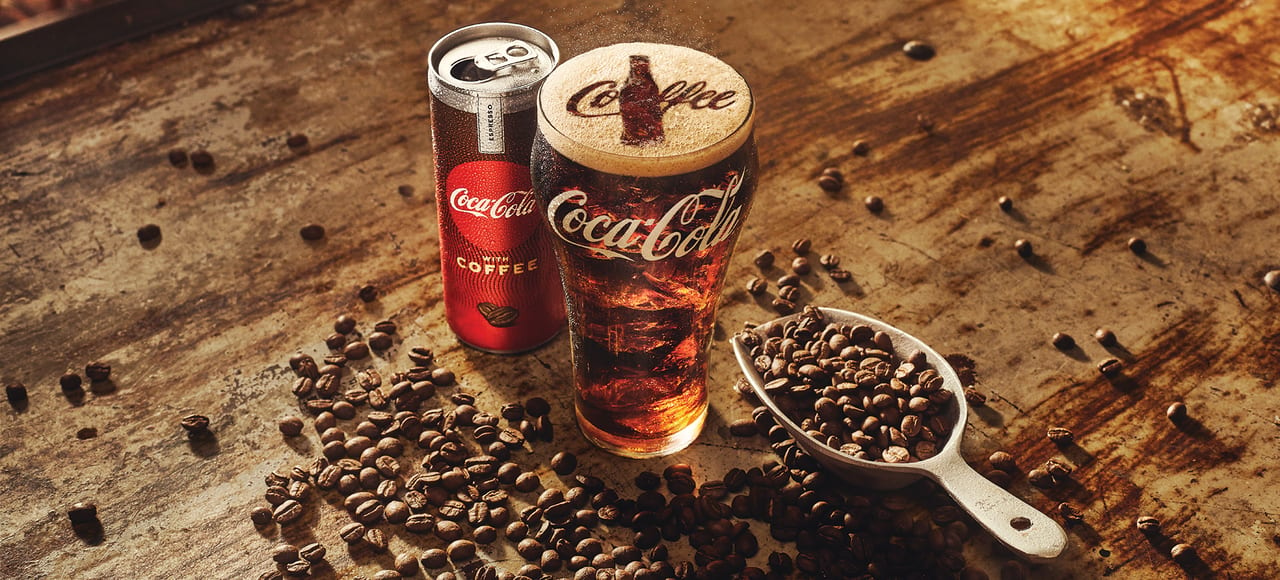
The team-up of two of the world’s most imbibed caffeinated beverages has proven to be surprisingly successful. Photo courtesy of: Coca Cola Co
“One can’t overstate the impact that the terroir will have on the beans,” says Pam Stanyon, innovation leader for beverage development company Stanyon Food Solutions, LLC, and a specialist in coffee and coffee drinks. She explains that even the same type of bean grown at two different altitudes will taste different once roasted.
“Also, it is important to keep coffee fresh after roasting and grinding,” Stanyon adds. “Product makers should ensure that the coffee is vacuum-sealed, preferably under nitrogen, before using it in a beverage or even as a flavor concentrate or powder to enhance foods such as a baked item.”
Coffee, plus
Recognizing that alcohol and coffee are spirit sisters, Apres Beverages, LLC’s Cask & Kettle team developed a new category of brewable, liquid coffee pod cocktails with four coffee flavors and one spiked cider. The coffee line-up includes Mexican coffee with vodka and tequila, Hot Blonde coffee with vodka and vanilla, Minty Patty with vodka and mint, and C&K’s take on the popular Irish coffee with vodka and Irish whisky. “What started as an idea to get through a tough work meeting turned into a new beverage category,” explains Pete Borozan, Cask & Kettle’s co-founder. “We took two years to perfect the formulas. During that time, we learned a ton.”
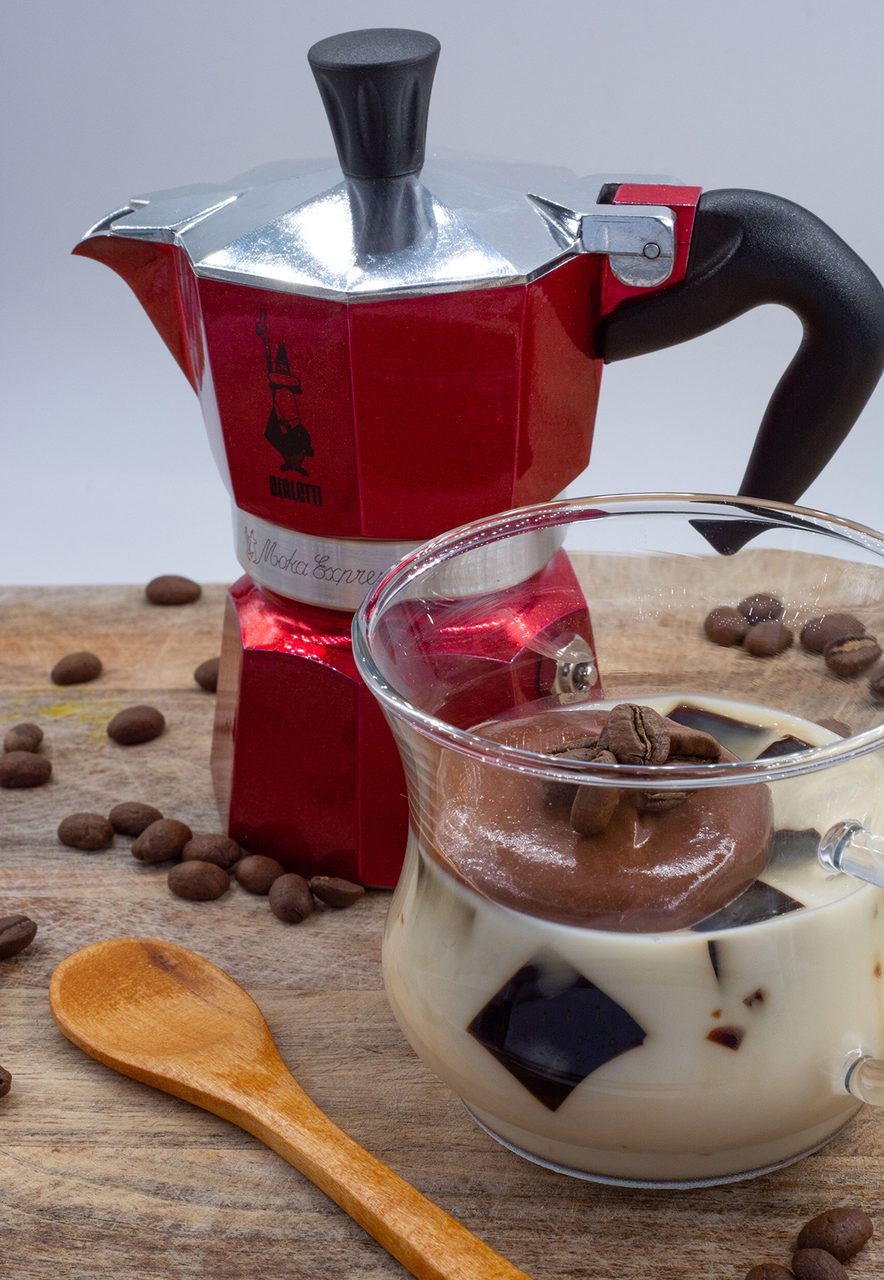
One of the hottest trends in coffee is collagen coffee, coffee enhanced with collagen peptides for joint health. Photo courtesy of: Gelita AG
Coffee plus…plus
Coffee is a known source of energy via its stimulant alkaloids, of which caffeine is the primary. “Stand-alone coffee provides minimal nutrition,” notes Margo Birk, RDN, a health and nutrition consultant for the food industry who focuses on trends that boost coffee’s inherently low nutritional value. “To get more ‘bang for their cup’, consumers are seeking coffee with added benefits. Growing in popularity are coffee-based items enhanced with vitamins, minerals, protein, probiotics, and botanicals.”
Birk points to products such as Green Mountain Coffee Roasters, Inc.’s VitaCup brand of coffee pods, which are boosted with B vitamins, biotin, collagen, MCT (medium-chain triglycerides), and mushroom extracts, especially Lion’s mane (Hericium erinaceus). Similarly, Superfoods Co.’s Super Amazing Coffee brand includes turmeric, ginger, green tea, and shiitake and chaga mushroom (Inonotus obliquus) powders, as well as other superfoods.
Collagen coffee is a new entry into the “coffee-plus” category. Collagen is the main component of connective tissues in the body, and research has demonstrated that daily collagen consumption can improve skin structure. “Consumers who desire healthy skin, hair, and nails with fewer signs of aging purchase dietary collagen as a supplement or food additive,” Birk explains. Nestlé Health Sciences released a freeze-dried coffee with collagen peptides under its Vital Proteins collagen brand.
According to the International Food Information Council’s 2021 Food & Health Survey, 5% of consumers are now following a ketogenic diet. The so-called keto diet’s basis is to have energy supplied from fat instead of carbohydrates. This led to a number of keto coffee products that include some form of fat. Billed as “the original keto coffee,” Bulletproof 360, Inc. has been producing cold brew coffee with MCT oil and collagen since 2013. Rapid Fire Keto Coffee is a more recent example, including coconut oil, MCTs, and butter from grass-fed cows in its coffee. In the “better-for-you” products space since 2005, It Works! Corp. segued into better-for-you coffee with a spiced keto coffee and a white mocha-flavored keto coffee in pods and single-serve packets.
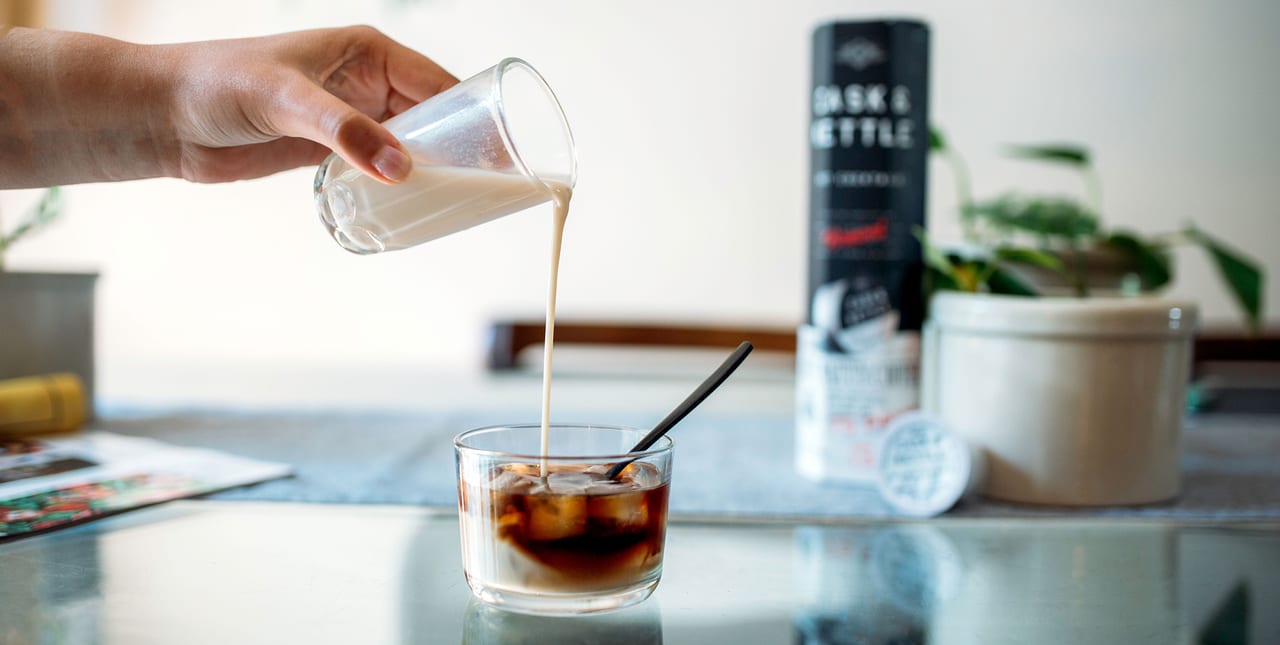
Recent coffee beverage development has focused on many forms of “coffee plus” beverages, either with nutraceuticals or adult coffees with spirits. Photo courtesy of: Apres Beverages, LLC/Cask & Kettle
Describing the team’s progress, Borozan reveals several key discoveries: Liquid concentrates are better formulation tools because, as they are “de-watered” rather than dehydrated, the desired natural coffee flavors remain in the final formula. Liquids also provide more flavor options for designers to work with.
However, Borozan also mentions some challenges to concentrates. For example, small changes in formulation can lead to substantial changes in the final drink flavor. He recommends that developers iterate cautiously. Also, specific concentrates are high-priced, so it is important to blend for taste and work toward balancing flavor with the cost-of-goods target.
Full-bodied flavor
Coffee is making its mark on the culinary front as well. Charlie Baggs, president and executive chef of Charlie Baggs Culinary Innovations, Inc., offers the following techniques for innovating with coffee.

Coffee flavors—as well as the caffeine component—are expanding beyond pastries into energy bars and confections. Photo courtesy of: That's It Nutrition, LLC


Consumers across the globe will enjoy two billion more cups of coffee…and that’s just today.
“First, coffee is an excellent tool to manage bitterness up and down the taste profile,” he notes. “Consumers enjoy a caffeine punch and the uniqueness of the coffee flavor in unsuspected places. For example, a savory barbecue sauce can be ramped with the piquant note of coffee, balancing the acid and sweetness. Likewise, in some cooking techniques where the proteins are not completing the Maillard browning reaction due to lower heat, coffee offers a flavor complement to replace the caramelization process.”
Baggs points out that coffee brings complexity to a flavor profile whether or not the coffee flavor is carried through to the end.
“Dialing in the coffee with an extract or powder form at a low percentage gives nuance to the stronger notes and makes the whole flavor profile more difficult to duplicate," he says. "Coffee in a food formulation at approximately 3% to 5% of the formula will provide an intriguing hook for the taster, yet not change the intended primary flavor. A higher percentage, say 20% or more, will showcase the coffee and bring an inviting flavor to the dish.”
For meat, coffee can be used in the cooking process or mixed directly with the meat. For example, Baggs recommends adding coffee as part of the braising liquid to achieve a depth of flavor and unique product position. Coffee extract or powder added to beef, chicken, or turkey burgers complements a sweet bun or sweeter condiment. Meat and plant burger combinations, such as beef and mushrooms, can use coffee to create a complex flavor and offset any negative earthy or gamey mushroom flavors.
Beans by the billion
For all the fancy terroir-driven marketing and boutique bean brewers percolating in today’s market, coffee is still a commodity item. Columbia, Brazil, and Vietnam are the top coffee bean growers. In parallel, the US, Germany, and France are sizable coffee importers. According to the International Coffee Organization (ICO), cumulative exports from all coffee producers between June 2020 and May 2021 totaled the equivalent of nearly 8M kg (17B lb). World consumption for coffee for the same one-year period is estimated at more than 10B kg (more than 22B lb), an increase of almost 2% over the previous year…and equaling almost the entire amount of coffee production for the year.
Baggs further encourages developers to work with their marketing colleagues to spotlight a coffee’s regionality. A region-specific coffee provides consumer intrigue and a one-of-a-kind flavor.
Baggs notes, “In foodservice applications, for example, a single-origin Peruvian coffee with a slow-braised lamb shank, paired with South American chili peppers and caramelized onions, showcases the coffee’s rich dark flavor notes and highlights the terroir of the coffee source.”
Coffee futures
Stanyon Food Solutions’ Pam Stanyon is looking ahead to what’s brewing in coffee and seeing innovative coffee bean flavors. “We should see continued crossover from spirits and wine,” she predicts. Current examples have included coffee beans cured in used bourbon barrels. “The same approach, coffee beans cured in wine casks, will bring coffees that take on another layer of complexity, heightening the sensory experience in the consumer's cup,” she adds.
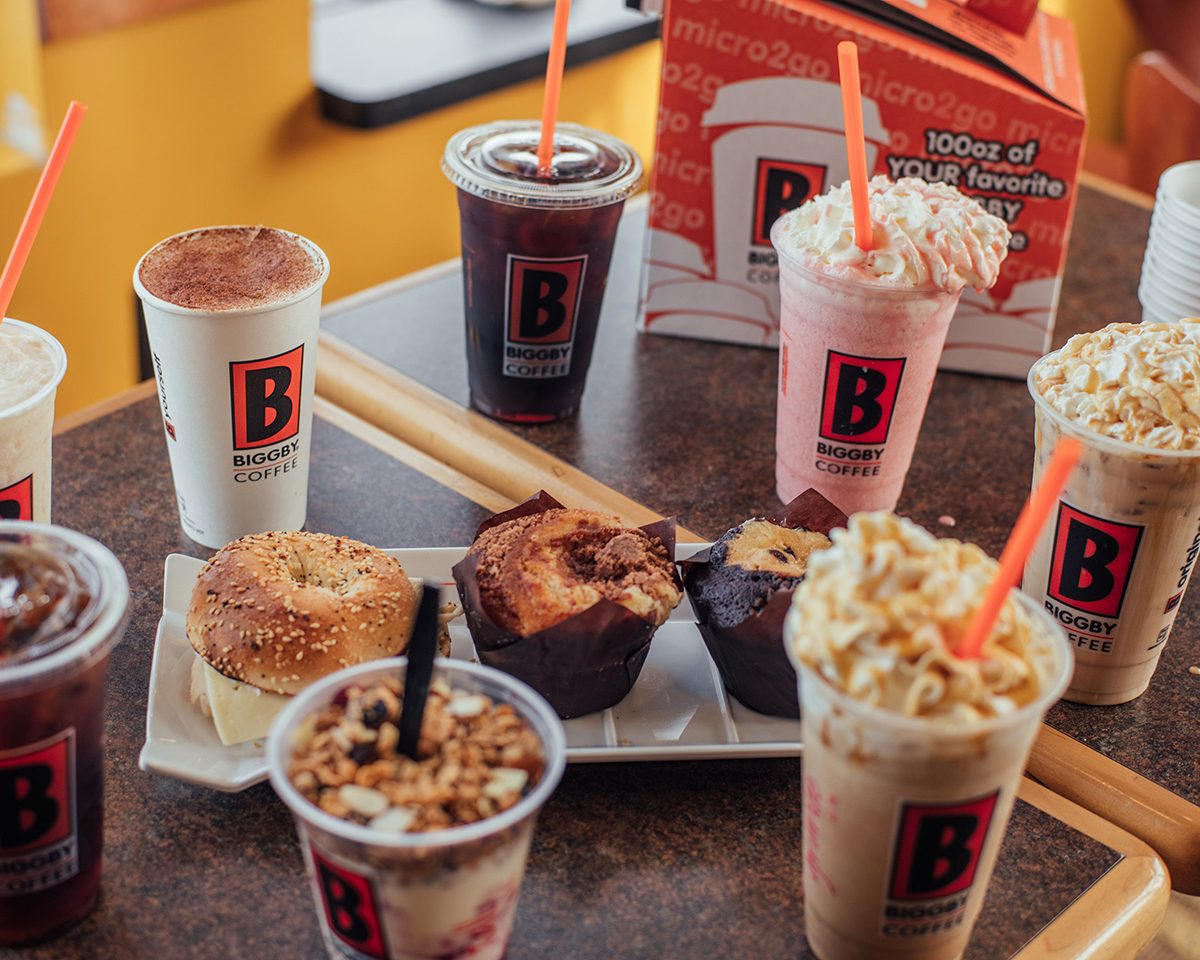
With the growth of “boutique” coffee houses still expanding, coffees flavored with fruit and spices are solidly mainstream. Photo courtesy of: Biggby Coffee Standby, Inc.
On another high note, the use of cannabinoids (CBD) in beverages is showing up everywhere of late. “The actual flavor of CBD is unpleasant,” Stanyon opines. “But combining espresso powder with maple and cinnamon will mask the earthy off-notes contributed by CBD. The combination is especially well applied in baked goods and snacks.”
Crio, Inc.’s Crio Bru brewed cacao is a new hot beverage arrival that leverages coffee positives—perk, flavor, astringent notes, and familiarity of roasting and brewing flavors—into a unique coffee mimic. The company derived its concept from the ancient Central and South American civilizations that prepared a cacao-based drink (ka’kao in the Mayan language) they termed “the drink of the gods.” Served to royalty in golden goblets, and sometimes to warriors, the beverage was strong and bitter and did not resemble what is called cocoa today. The alkaloid-rich concoction was valued, however, for imparting restorative and energizing properties.
Coffee is one of the most popular beverages—and flavors—the world over. It balances familiarity and tradition with flavorful and nutritional innovation. And today, coffee is enjoying an expansion into more complex beverages, many of which target nutraceutical benefits. As formulators seek innovations that blend comfort with excitement and the unexpected, coffee will experience a new awakening in beverage and food development. PF
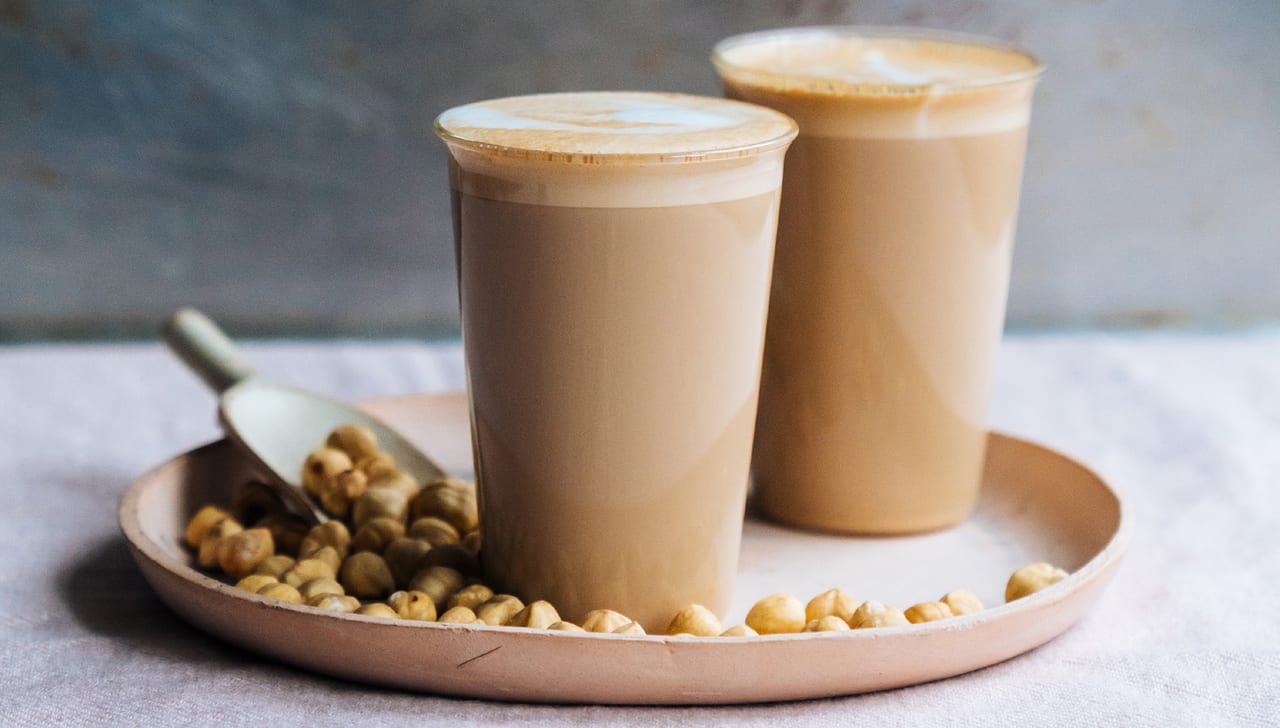
Along with collagen coffee, coffee with whole protein boosters is an increasingly popular category. Photo courtesy of: Kerry Group plc
October 2021
